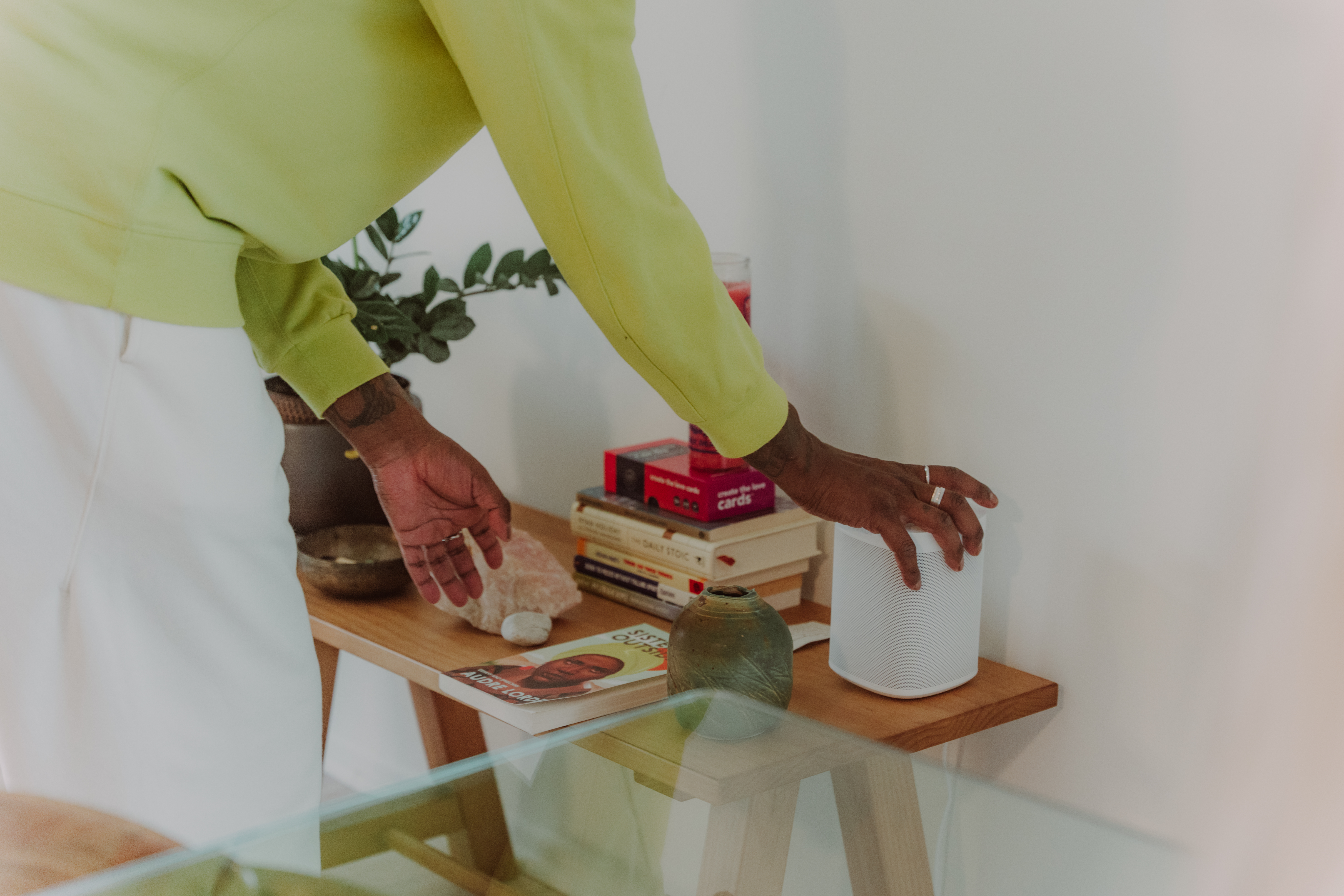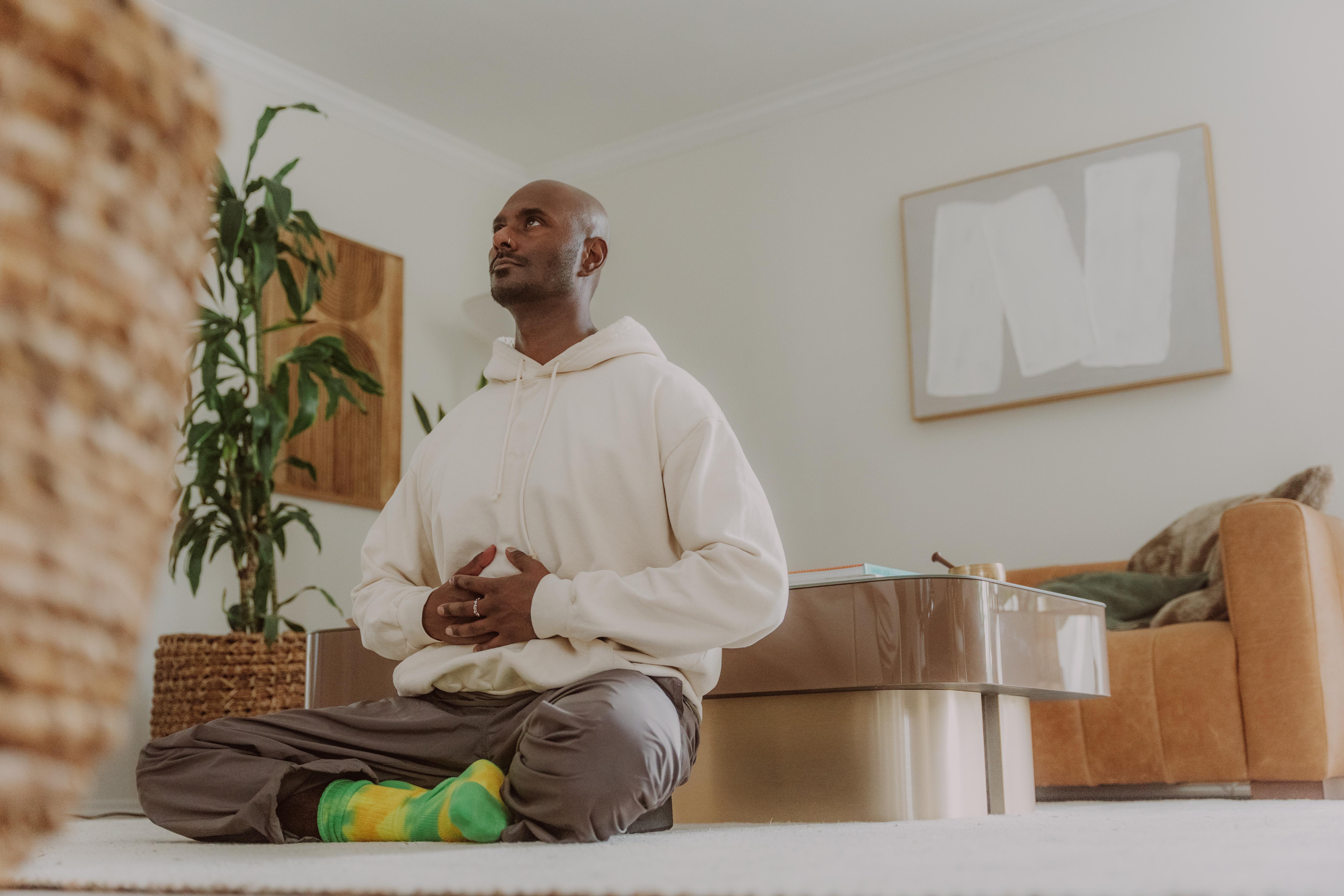
Key takeaways
- You can transform any corner of your home into a serene sanctuary that deepens your meditation practice and shields you from everyday distractions.
- It's easy to design a personalized meditation space, on any budget, hat aligns with your intentions and fosters daily mindfulness.
- Thoughtful choices in decor, colors, and natural elements can elevate your meditation experience and promote inner peace.
Having a space dedicated to meditation in your home provides a calming, grounding place to go to when you need space to reset from stress, reconnect to yourself, and establishes a place for daily practice. With careful preparation, you can create a daily meditation space in your home that helps bring your mind into the present.
Clearing Your Mind
The world is inevitably busy, loud, and distracting—so it can be difficult to find a quiet space where we can draw our focus internally. With our growing to-do lists and reminders, it can be even more difficult to quiet our minds. Having a dedicated space for meditation can help you avoid distractions and create a calming environment at little cost to you.
1. Avoid Distractions While Meditating
Having a dedicated space for meditation can help you establish physical and energetic boundaries for your practice. This peaceful zone will allow you to reduce distractions and concentrate on this mindful time.
2. Eliminate Clutter and Establish Boundaries
Having a dedicated area for meditation can help you free your meditation space from clutter, which can create distractions and make it difficult to process information. Establishing clear boundaries for your space can help you create an area optimized for your meditative needs, even if the rest of your home is filled with distractions.
3. Tailor Your Space to Your Budget
Before we discuss ways to cultivate your meditation space, it’s important to note that this process doesn’t require large purchases or a significant financial commitment.
You don’t have to spend any money to curate this space in your home, despite what online advertisements might imply. Likewise, you don’t have to live in a house or have a large spare room to carve out a meditative space.
Finding Purpose, Privacy, and Intention
The first steps toward carving out a meditation space include discovering that space’s purpose, finding a peaceful area to dedicate your intentions, and making that space distinct from the rest of your home.
After determining the purpose of your space, it’s time to find a quiet part of your home where you can dedicate your intentions.
1. Discover the Purpose of Your Space
Creating a meditation space doesn’t require much. While a home meditation space is a helpful tool, all you need for meditation is your breath. The elements you add to this space exist to facilitate that mindfulness. When planning your meditation space, consider your meditation style and your needs.
How do you want to feel when you enter this space? How will it best be utilized? When most people create a meditation space in their home, they are looking for a place they can dedicate to silence and stillness. Give yourself the time to discover the purpose of your space and set your intentions.
2. Prioritize Privacy
If you live with other people or pets, consider choosing a space where a door or divider is available to help deter external interruptions. Remember, this space doesn’t have to be an entire room in your home. Any corner or closet can be cleared away to give you peace of mind.
Once you have decided which area to use, clear the space completely. Beginning with a blank slate will help you intentionally place items in your space and avoid unnecessary clutter.
Ensuring that this space is only used for meditation can help induce a peaceful state of mind. Creating a distinction between your meditation space and the rest of your home will help you set a meditative tone.
3. Mindfully Choose Your Decor
The decor that you choose for your meditation room or space can help enhance your practice. While some design choices will be more sartorial, others can have a marked effect on your ability to focus and remain grounded.
For example, plants are a great way to connect to the natural world while meditating indoors, and they may even help enhance the air quality in your meditation space.
A NASA study showed that plants such as peace lilies, snake plants, and Chinese evergreens emit oxygen at a heightened rate and help purify the air, while other plants like sansevieria can help remove toxins. Plants can also serve as a meditation anchor for practices that require a physical focal point.
Decorate Your Space

Because your meditation space is already curated towards your needs, there’s no limit to the number of ways it can be personalized.
In addition to optimizing the meditation space, you can include personal touches that inspire your practice. This can be photos, meaningful art, a symbol, a treasured item, or any other token that encourages reflection when you’re feeling blocked.
1. Choose Calming Colors
Meditation spaces don’t require a specific color scheme, but your chosen colors should help you feel calm. Some people gravitate to blues, while others may prefer dark greens or neutral tones.
If you’re unsure of where to begin, try researching color psychology. Each color has both positive and negative associations. Mindfully choosing your color scheme based on personal preferences and scientific research is a great way to determine which colors will best fit your space.
2. Find Your Light

Most people prefer meditating in dim lighting. Installing a dimmer or lighting remote that allows you to control the lights in your meditation space may help you relax. Low lights may create an automatic sense of calm, similar to how your body responds when you turn off the lights at night when preparing for bed.
Others prefer natural light in their space. The warm sun on your skin can similarly create a relaxing effect on your body.
Sun exposure has added benefits, including a release of serotonin, increased vitamin D absorption, and circadian rhythm modulation. If you choose to meditate in sunlight, always wear sunscreen to protect your skin from UV rays, even indoors.
Whichever lighting you choose, ensure that it helps you feel tranquil and facilitates a meditative state of mind.
3. Embrace Minimalism
If you choose to include furniture in your space, keep it simple. To reduce clutter, it’s best to avoid anything big or bulky. We recommend a simple meditation pillow. You may also want to include a rug, carpet, or blanket beneath the pillow to create a comfortable seating area.
If you cannot comfortably sit on the floor, consider a single chair that facilitates good posture. While you should feel comfortable in your chair, don’t pick a fluffy reclining chair or bean bag. You should be able to sit up straight with your heart open easily. Rather than purchasing a new chair, you may be able to use an extra dining room chair or wooden desk chair.
4. Try Aromatherapy

Aromatherapy has been used in holistic medicine since prehistoric times. It harnesses the power of scent on the mind through essential oil diffusion, incense, topical application, and other methods.
Scents such as lavender, valerian, jasmine, and bergamot may create a calming sensation, while peppermint, sweet orange, and rosemary are said to improve focus.
You can use scents during your meditation practice to enhance your calm and focus, or they can be released at the end of your meditation session to reinforce your practice before you return to the rest of your day.
The latter option may be appealing for those who find scents distracting. If you’re sensitive to scents or prone to headaches, you may also avoid scents altogether.
If you’re unsure which method will work best for your practice, try a guided meditation focusing on scent. This may help you determine which aroma will enhance your meditation space.
Try These 5 Meditations in Your New Space
Once you’ve created your meditation space, it’s time to find a meditation class. Guided meditation is a mindful and calming practice that can help you maximize your home meditation space.
Try these meditation classes from Open to ground yourself in your new meditation space:
- Witness Change w/ Allison S. Being resilient in the face of change is a transformative effect of consistent meditation. Take this class to do just that (10 Minutes).
- Grateful and Happy w/ Manoj D. A gratitude practice can accessibly boost your mood. Carry this meditation with you throughout the day (10 Minutes).
- Push and Pull w/ Erin G. When you find yourself stuck in complicated feelings, use this equanimity practice to comfortably exist within your challenge. More space, less tension (9 Minutes).
- Sleepless Morning w/ Renee N. This energizing meditation will recharge your battery and calm any leftover worries from not getting a deep night’s sleep (7 Minutes).
- Sink into Sleep w/ Mel M. Quiet a buzzing mind and help your body relax into the evening. Make this meditation your go-to nighttime ritual (30 Minutes).
A meditation space can provide an opportunity to curate an atmosphere that feels calming and unique to you through plants, aromatherapy, or other design elements tailored to your preferences.
We hope your new meditation space will become a welcome reprieve from the distractions and worries of daily life.
Author Bio
Through mindfulness & meditation, our co-founder Manoj, has helped thousands of people around the world trade mania for pause, so that they may live fearlessly in honour of a happier and more meaningful life. He is a proud father, writer, lululemon global ambassador and founder of Australia’s first drop-in meditation studio. Whether he’s teaching through words or the silence in between them, Manoj’s great love for Buddhist wisdom and contemporary science is present in every encounter.